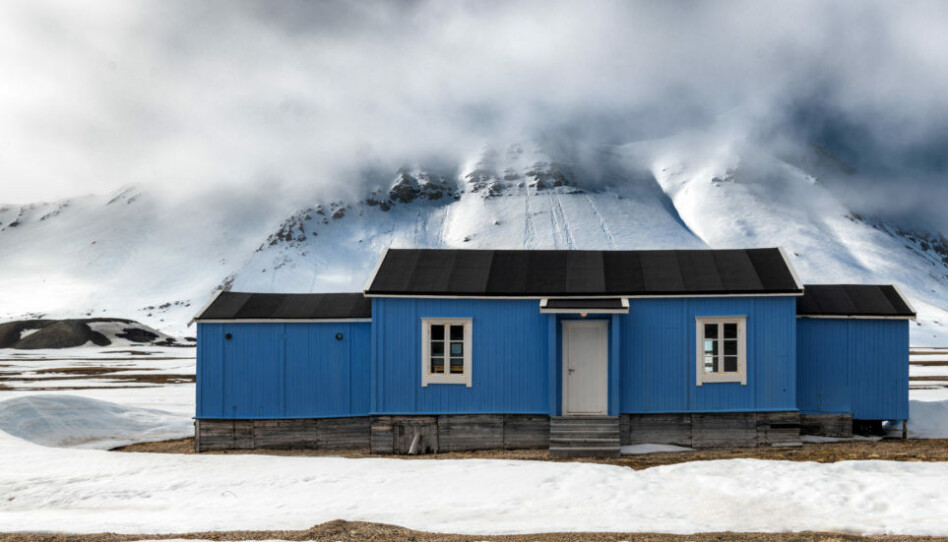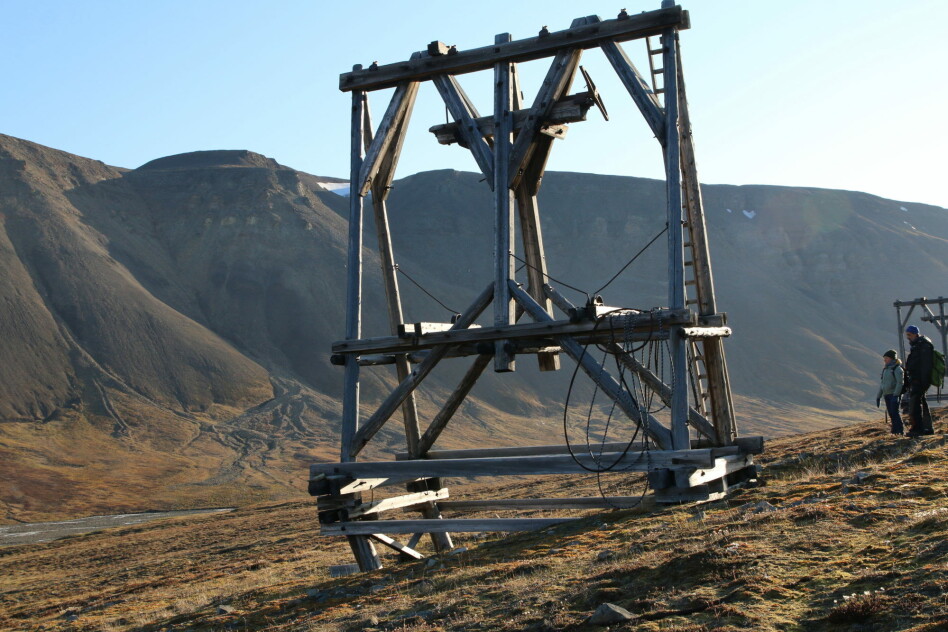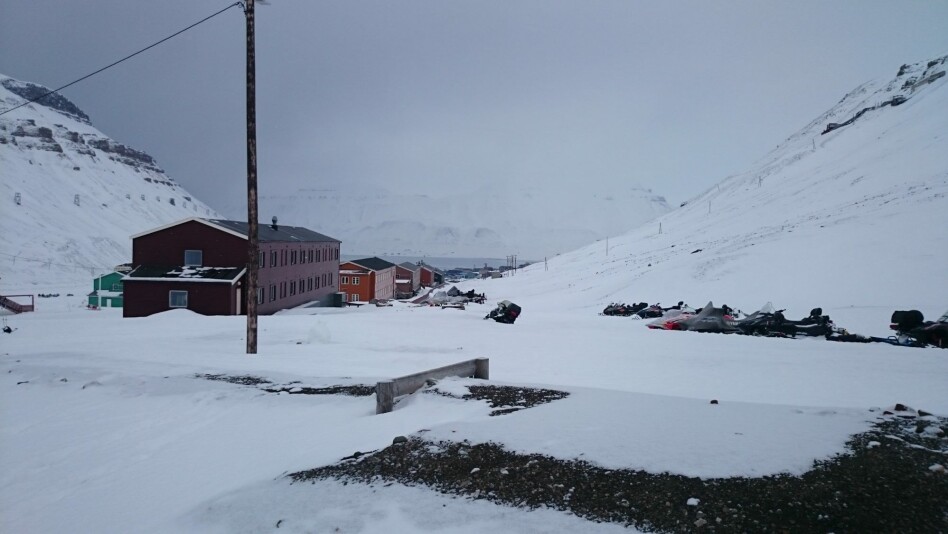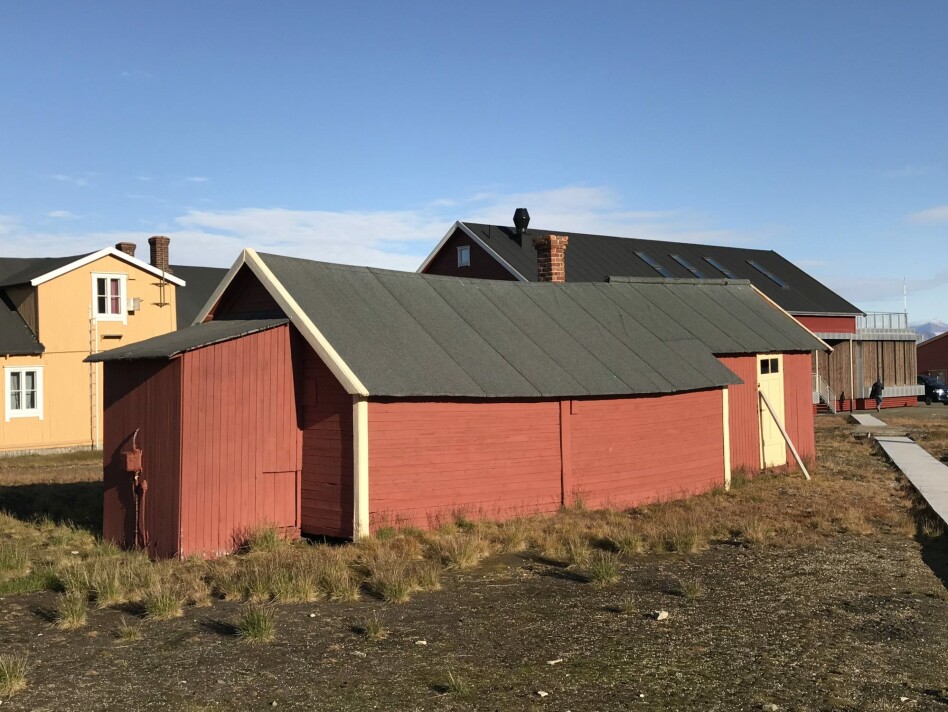THIS ARTICLE/PRESS RELEASE IS PAID FOR AND PRESENTED BY NTNU Norwegian University of Science and Technology - read more

Our arctic heritage is threatened by climate change
The cultural heritage of Svalbard is unique. It reflects human life and activity in a harsh and fragile environment. Researchers are now working to preserve it for posterity.
Cultural heritage sites are irreplaceable sources of historical information, providing insight into the social, religious, and economic life of our ancestors. They are important markers of identity, and constitute attractions to both locals and visitors, and can thus play an important role in a sustainable development of the Arctic region.
"Special attention is paid to preserving cultural heritage at Svalbard, which has no indigenous population, but whose history goes back to the early 1600s, project manager and research scientist in the norwegian research organization SINTEF," Anatoly Sinitsyn says.

On Svalbard, cultural heritage monuments and environments tell a unique history about hunting, trapping, coal mining and scientific activities all over the archipelago. The conservation of these objects and sites faces a double challenge from the warming climate and increasing human activity.
At the same time, the values contained in cultural heritage can play an important role in sustainable development of the North.
Working with the owners of heritage objects
"In the perspective of rapid climate change preservation and restoration strategies are highly needed," the SINTEF-researcher says.
The project PCCH-Arctic (Polar Climate and Cultural Heritage – Preservation and Restoration Management) is concentrating on the technical-industrial heritage of Longyearbyen and Ny-Ålesund. Both are former coal mining communities with many valuable historical objects and sites.
The project will develop a knowledge base or guideline that provides an objective decision-support management methodology for cultural heritage. The methodology will be elaborated by adaptation of standard engineering risk-based decision-making approaches for permafrost, supported by ethical and cultural considerations.
Local stakeholders are partners in the project; Longyearbyen Lokalstyre, Store Norske Spitsbergen Kulkompani AS, and Kings Bay AS, who are responsible for conserving and maintaining a comprehensive range of cultural heritage objects.
PCCH-Arctic targets their needs by using selected objects for data sampling, modelling and development of solution strategies. Concerns and perspectives of relevant stakeholders will be sampled and assessed through project meetings and interviews.
"The guideline can be utilized for managing specific cultural heritage objects in Longyearbyen and Ny-Ålesund, but also generally in Arctic areas," Sinitsyn explains.
Why climate change threatens the cultural heritage
These historical buildings were never constructed with eternal life in mind, nor with any awareness of future climate change. In addition, timber foundations of the building and structures are, even in a cold climate such as Svalbard, affected by rot decay.
Observations over the last decades and projections for the first half of the 21st century suggest an increase in surface air temperatures, a decline in snow cover and Arctic sea ice extent, and consequently an increase in permafrost temperature, river runoff, and local geohazards.
These geohazards, such as degradation of permafrost, coastal erosion, and slope hazards like landslides, rockfalls, and snow avalanches, may cause severe changes of landscapes and corresponding cultural environments and can be devastating for cultural monuments.

Human impact – both good and bad
A rapidly warming climate forces profound changes in many Arctic communities. Around Svalbard, diminishing sea ice makes new areas accessible in larger parts of the year for tourism, transportation, research, or resource exploitation, if not regulated.
For sure, new logistical and economic opportunities will influence how the local communities on Svalbard develop. A changing demography, whether it is residents or visitors, can in turn alter the way cultural heritage is appreciated and exploited – for better or worse.
Obviously, more extensive and intensive human activity can result in increasing wear and tear on cultural monuments. On the other hand, properly managed heritage is an attraction and asset for the development of a sustainable, low-impact tourism and for the local communities as well.
"In PCCH-Arctic we team up physical sciences with social sciences and humanities (SSH) to address the combined environmental and societal impacts on cultural heritage on Svalbard. SSH scientists will assess future developments in tourism and local communities, and examine the past and present regulatory framework for cultural heritage on Svalbard," associate professor Thor Bjørn Arlov at The University Centre in Svalbard (UNIS) says.
"We are also very interested in practices, values, and attitudes connected to conservation, restoration, and use of cultural heritage. This will be mapped through interviews and focus groups with local stakeholders and inhabitants," he explains.
Depending on permafrost as a stabilizing factor
With its almost 3000 inhabitants, Svalbard is one of the world’s northernmost inhabited areas. This far north, impacts from climate change are particularly visible and have already pointed out an increased strain to the built environment. Through thawing of the permafrost, all constructions founded in and on the ground are influenced by ongoing climate change.
This change, however, in general happens gradually even during the last years when increasing warming is observed. What the magnitude of warming will be in the coming years and decades, and when resulting gradual changes in permafrost will cause significant influence on foundations, are some of the open questions.
Many of the buildings and constructions at Svalbard are founded on wooden logs in the permafrost, and typically structures we define as cultural heritage. Some historical houses rest on very simple foundation “solutions”, placed directly on the ground surface. The archipelago of Svalbard is characterized by steep hills and mountains, dependent on the permafrost as a stabilizing factor.

"A deepening of the seasonal thaw layer (the so-called “active layer”) and thawing of the deeper permafrost, will most likely increase the annual period when rot decay is most active and serve as a destabilizing strain on constructions, slopes, hills etc. It is thus one of the largest threats of climate change, which may increase risks associated with local geo-hazards, which in turn may affect diverse constructions in Longyearbyen and other Svalbard and pan-Arctic settlements," Sinitsyn says.
Climate change and permafrost degradation
Improved methods for local climate projections and permafrost degradation at the study sites will be developed, using the newest methodologies of current climate and permafrost modelling.
"To represent a future climate change scenario in fine detail, we will use a regional climate model with 3 km resolution. For special weather events such as extreme snow or rainfall we will go even further to 1 km. Using new methods, we will analyse local changes in relation to a large number of global models," researcher Oskar Landgren at the Norwegian Meteorological Institute explains.
This is necessary to put the new climate simulations in context, as well as to assess the statistical spread that probabilistic engineering applications need.
New climate projections will be used to simulate the permafrost response. This will be done via computation of the thermal regime and soil water/ice contents below and around selected cultural heritage in Longyearbyen and Ny-Ålesund.
Aiming for a holistic management
The PCCH-Arctic guideline aims for a holistic management and use of cultural heritage in polar areas, utilizing the achievements within the project. The guideline will provide research-based recommendations for maintenance and monitoring, preservation and restoration of foundations to secure and future-prove cultural heritage.
The guideline will provide approaches for mitigation of climate change impacts and adaptation of non-structural and structural solutions and measures for the preservation of cultural-historical values in a cold climate. This will be based on an in-depth literature review and experience and know-how of the user-partners in restoration and maintenance of cultural heritage.
These approaches and solutions will be used as a measure for risk reduction of the PCCH-Arctic methodology for decision making. A sub-task will include the elaboration of specific solutions for the needs of user-partners, which may be applicable elsewhere in the Arctic. Monitoring methods for foundation settlements and permafrost temperatures will be provided.
Data collection on environmental and permafrost conditions in Ny-Ålesund will be based on cooperation and collaboration with the flagship programs of Atmosphere and Terrestrial Ecosystems, since permafrost parameters are monitored in the context of other studies, too.
See more content from NTNU:
-
Social media is connected to cyberbullying – but not how we thought
-
Forskere ved NTNU får nesten 24 millioner av EU for å lage nye strømomformere
-
This helps the youngest children enjoy school more
-
Can we tap the ocean’s power to capture carbon?
-
Researchers have uncovered major problems in Norway's salmon industry
-
Why ChatGPT is bad at imitating people





































